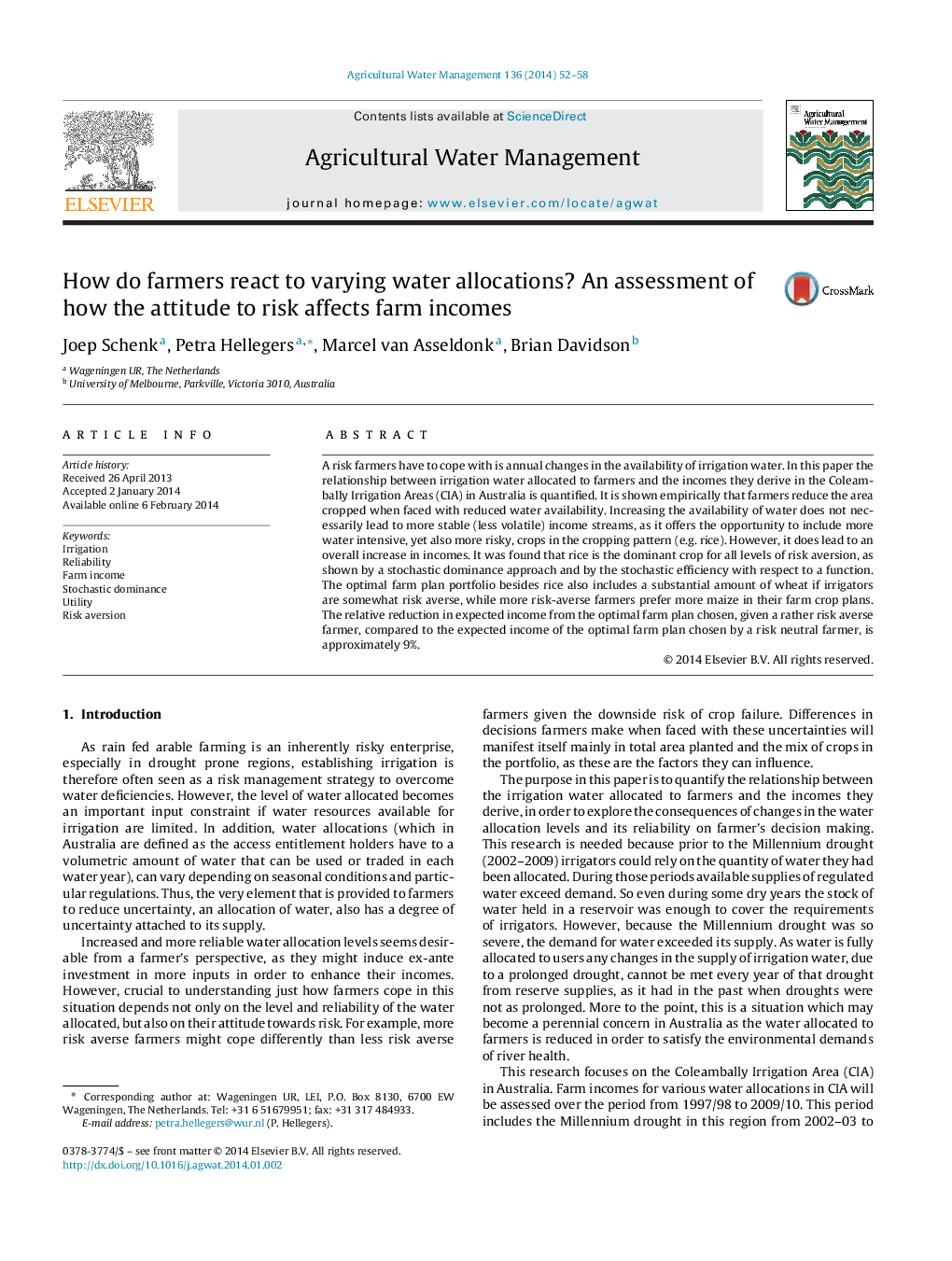| کد مقاله | کد نشریه | سال انتشار | مقاله انگلیسی | نسخه تمام متن |
|---|---|---|---|---|
| 4478720 | 1622943 | 2014 | 7 صفحه PDF | دانلود رایگان |
• Irrigators have to cope with annual changes in the availability of water.
• Irrigation water allocated to farmers and the income derived is quantified.
• Farmers reduce the area cropped significantly, when water availability is reduced.
• Increasing the availability of water does not necessarily lead to more stable income.
• Rice is the dominant crop for all levels of risk aversion.
A risk farmers have to cope with is annual changes in the availability of irrigation water. In this paper the relationship between irrigation water allocated to farmers and the incomes they derive in the Coleambally Irrigation Areas (CIA) in Australia is quantified. It is shown empirically that farmers reduce the area cropped when faced with reduced water availability. Increasing the availability of water does not necessarily lead to more stable (less volatile) income streams, as it offers the opportunity to include more water intensive, yet also more risky, crops in the cropping pattern (e.g. rice). However, it does lead to an overall increase in incomes. It was found that rice is the dominant crop for all levels of risk aversion, as shown by a stochastic dominance approach and by the stochastic efficiency with respect to a function. The optimal farm plan portfolio besides rice also includes a substantial amount of wheat if irrigators are somewhat risk averse, while more risk-averse farmers prefer more maize in their farm crop plans. The relative reduction in expected income from the optimal farm plan chosen, given a rather risk averse farmer, compared to the expected income of the optimal farm plan chosen by a risk neutral farmer, is approximately 9%.
Journal: Agricultural Water Management - Volume 136, April 2014, Pages 52–58
